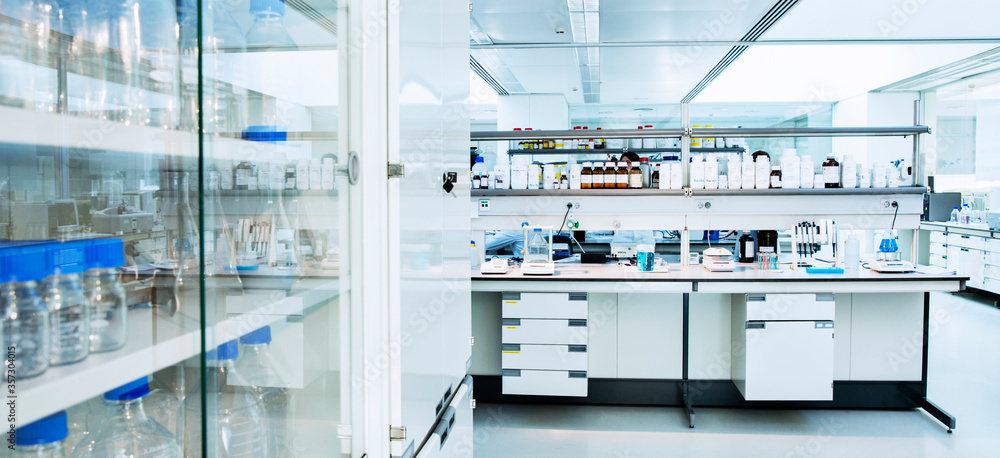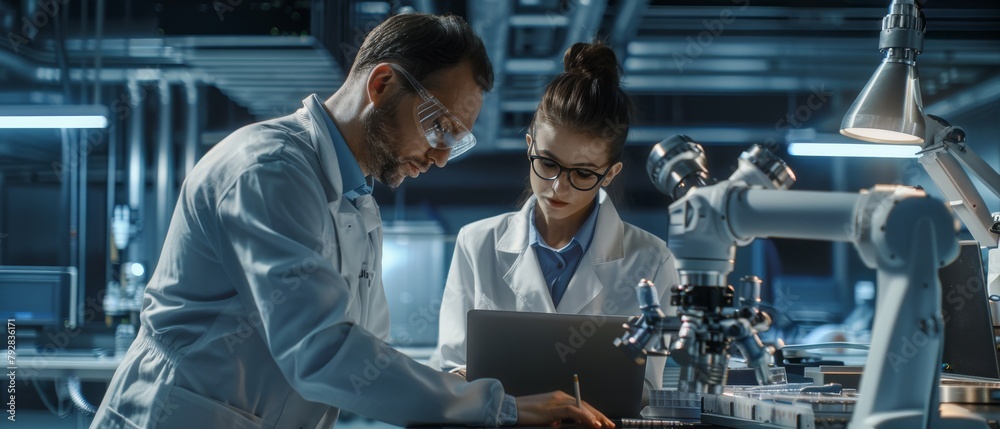Moving lab equipment safely requires careful planning and execution to ensure the protection of valuable assets and the safety of personnel involved. Here are five essential tips to efficiently move lab equipment without jeopardizing their functionality or integrity.

First, proper planning is indispensable. Assess the specific requirements of each equipment, including size, weight, and fragility. Create a detailed timeline and allocate sufficient resources to ensure a smooth transition.
Second, equipment documentation is paramount. Label each item accurately and maintain an up-to-date inventory. This will facilitate the tracking and organization process throughout the move.
Third, ensure that all necessary safety precautions are followed. Identify potential hazards, such as chemicals or radioactive materials, and handle them accordingly. Consult experts if needed to guarantee compliance with safety regulations.
Fourth, invest in high-quality packaging materials to protect the lab equipment during transportation. Use cushioning materials, such as foam or bubble wrap, to absorb shocks and vibrations.
Last, enlist the assistance of professional lab equipment movers experienced in handling lab equipment. Their expertise will minimize the risk of damage and ensure a seamless relocation process.
By following these five must-know tips, you can streamline the process of moving lab equipment safely and efficiently.
Importance of Safely Moving Lab Equipment
The significance of safely moving lab equipment cannot be overstated. Laboratories are equipped with a variety of instruments, ranging from precision tools to complex machinery, all of which play a crucial role in scientific experiments and analyses. Any damage or disruption to these instruments can result in setbacks in research projects, delays in production schedules, and financial losses. Moreover, mishandling lab equipment can pose significant safety risks, especially when dealing with hazardous materials or sensitive components. Therefore, ensuring the safe and secure relocation of lab equipment is essential to maintain operational continuity and protect valuable assets.
Efficiently moving lab equipment requires overcoming several common challenges that are inherent to the process. One of the primary obstacles is the diversity of equipment types found in laboratories, each with its own set of requirements for handling and transportation. From bulky centrifuges to delicate microscopes, lab equipment comes in various shapes, sizes, and fragilities, necessitating customized strategies for packing and moving. Additionally, the sensitive nature of many instruments makes them vulnerable to environmental factors such as temperature fluctuations, vibrations, and physical impacts during transit, further complicating the relocation process. Addressing these challenges proactively is key to ensuring a smooth and successful move.
Planning the Move: Assessing Equipment and Requirements
The first step in efficiently moving lab equipment is thorough planning. Begin by conducting a comprehensive assessment of all equipment that needs to be relocated. Take note of each item’s specifications, including dimensions, weight, and fragility. This information will help determine the appropriate packing materials and handling procedures required for safe transportation. Create a detailed inventory of the equipment, noting serial numbers, model types, and any special handling instructions provided by the manufacturer. This documentation will serve as a valuable reference during the packing and unpacking phases of the move, ensuring that each item is accounted for and treated with the necessary care.
After assessing the equipment, the next crucial aspect of planning is establishing a timeline for the move. Consider factors such as project deadlines, equipment downtime tolerances, and logistical constraints when determining the optimal schedule for relocation. Allocate sufficient time for packing, transportation, and setup at the new location to avoid rushed decisions or last-minute complications. Engage key stakeholders, including lab managers, researchers, and facilities personnel, in the planning process to ensure alignment on priorities and responsibilities. Clear communication and coordination among team members are essential for a successful and efficient move.
Preparing Lab Equipment for Safe Transport
Once the planning phase is complete, it is time to prepare the lab equipment for safe transport. Start by decluttering work areas and removing any unnecessary items from the equipment to be moved. Secure loose components, such as detachable parts or accessories, to prevent them from getting lost or damaged during transit. Clean and inspect each piece of equipment to ensure that it is in optimal working condition before being packed. Perform any necessary maintenance or calibration checks to address any existing issues proactively. Document the current status of the equipment to compare against its condition post-move, facilitating troubleshooting if needed.
After preparing the equipment physically, focus on securing its data and settings. Back up any critical data stored on computers, servers, or other electronic devices associated with the lab equipment. Safely disconnect and label all cables, cords, and connections to facilitate reassembly at the new location. Take photographs or videos of the setup to serve as visual references during the unpacking and reinstallation process. Create a detailed packing plan for each item, specifying the materials and techniques to be used for cushioning, wrapping, and securing the equipment. Proper preparation is the key to ensuring that lab equipment arrives safely and intact at its destination.
Choosing the Right Moving Company for Moving Lab Equipment
Selecting the right moving company for transporting lab equipment is a critical decision that can significantly impact the success of the relocation process. Look for movers with experience handling specialized or sensitive items, such as laboratory instruments and machinery. Verify that the moving company is licensed, insured, and compliant with industry regulations governing the transportation of hazardous materials or fragile equipment. Request references from other laboratory facilities or research institutions that have used the moving company’s services to gauge their reputation and reliability.
When evaluating potential moving companies, inquire about their expertise in handling lab equipment, including any certifications or training programs their staff undergo. Discuss the specific requirements of your equipment and the unique challenges of the relocation project to assess the mover’s ability to meet your needs. Obtain a detailed quote that outlines the services provided, the timeline for the move, and any additional fees or surcharges that may apply. Clarify the responsibilities of both parties regarding insurance coverage, liability protection, and contingency plans in case of unforeseen circumstances. Choosing a reputable and experienced moving company is essential for ensuring a smooth and secure transition for your lab equipment.
Packing and Securing Lab Equipment for Transportation
Proper packing and securing of lab equipment are crucial steps in safeguarding it during transportation. Begin by selecting high-quality packaging materials that provide adequate protection against shocks, vibrations, and temperature fluctuations. Use specialized packing supplies such as foam inserts, bubble wrap, and custom crates to cushion and stabilize fragile or sensitive equipment. Label each package clearly with the contents, handling instructions, and destination to facilitate efficient unpacking and setup at the new location.
When packing lab equipment, follow manufacturer guidelines for disassembly and packing procedures to avoid damaging delicate components or voiding warranties. Use caution when handling sharp or hazardous items, such as glassware or chemicals, and ensure they are securely sealed and labeled for safety compliance. Organize packed items logically to facilitate loading and unloading processes, minimizing the risk of accidents or mishaps during transit. Seal all containers tightly and double-check for any loose or protruding parts that may cause damage to the equipment or other items in transit. Taking the time to pack methodically and securely will help prevent costly incidents and ensure the safe arrival of your lab equipment.
Ensuring Safety During when Moving Lab Equipment
Safety should be a top priority during the relocation of lab equipment to protect both personnel and valuable assets. Before transporting any items, conduct a thorough risk assessment to identify potential hazards and develop mitigation strategies. Implement safety protocols for handling equipment containing hazardous materials, ensuring that all regulatory requirements are met. Provide training to personnel involved in the move on proper lifting techniques, equipment handling procedures, and emergency response protocols to prevent accidents or injuries.
During transit, monitor the condition of the equipment regularly and secure it against shifting or impact inside the moving vehicle. Use caution when loading and unloading heavy or bulky items to prevent strains or accidents. Ensure that all safety equipment, such as personal protective gear and spill containment kits, is readily available in case of emergencies. Communicate with the moving team to address any safety concerns or issues that arise during the transportation process promptly. By prioritizing safety at every stage of the move, you can minimize risks and ensure a secure and incident-free relocation of your lab equipment.
Unpacking and Setting Up Lab Equipment at the New Location
Upon reaching the new location, the unpacking and setup phase of the lab equipment relocation begins. Unload all items carefully, following the packing plan to ensure that each piece of equipment is accounted for and handled appropriately. Inspect the equipment for any visible damage or signs of mishandling during transit, documenting any issues for potential insurance claims or warranty repairs. Verify that all components, accessories, and documentation accompanying the equipment are present and accounted for before proceeding with the setup.

Assemble and reinstall the lab equipment according to the manufacturer’s instructions, using the visual references and labeling from the packing phase to guide the process. Test each item for functionality and calibration to ensure that it operates correctly after the move. Recalibrate instruments that may have been affected by the relocation to restore their accuracy and performance. Establish a systematic approach to organizing and configuring the lab space to optimize workflow and accessibility for users. Engage with lab personnel to familiarize them with the new setup and address any concerns or questions they may have about the relocated equipment. By methodically unpacking and setting up the lab equipment, you can minimize downtime and disruptions, allowing operations to resume smoothly in the new environment.
Testing and Recalibrating Lab Equipment After the Move
After the lab equipment has been unpacked and set up, it is essential to conduct thorough testing and recalibration to ensure its proper functioning. Perform functional tests on each instrument to verify that it operates within specified parameters and produces accurate results. Check for any deviations or anomalies that may have occurred during the move and address them promptly to prevent further issues. Calibrate sensitive instruments, such as balances or spectrophotometers, using standard reference materials to verify their accuracy and precision.
Collaborate with equipment manufacturers or authorized service providers to perform maintenance checks or repairs if needed. Update software and firmware on electronic devices to ensure compatibility and security. Document the post-move condition of the lab equipment, noting any changes or adjustments made during the testing and recalibration process. Schedule routine maintenance and calibration checks to keep the equipment in optimal condition and prevent future disruptions. By verifying the functionality and accuracy of lab equipment after the move, you can maintain the integrity of your research or production processes and uphold quality standards.
Conclusion: Maintaining Safety and Efficiency when Moving Lab Equipment
In conclusion, efficiently moving lab equipment safely requires careful planning, preparation, and execution to protect valuable assets and ensure operational continuity. By following the five must-know tips outlined in this guide – planning the move, preparing lab equipment, choosing the right moving company, packing and securing equipment, and ensuring safety – you can streamline the relocation process and minimize risks of damage or disruptions. Remember that safety should always be a top priority during the move to safeguard personnel and equipment from harm.
Maintain open communication and coordination among all stakeholders involved in the relocation to ensure a smooth and successful transition. Document each step of the move, from planning to testing, to facilitate troubleshooting and compliance with regulations. Regularly assess the condition of lab equipment post-move and address any issues promptly to maintain optimal performance. By prioritizing safety and efficiency in lab equipment relocation, you can mitigate risks, reduce downtime, and uphold the integrity of your research or production operations.
